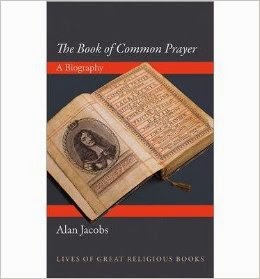The Book of Common Prayer A Biography sounds like a book many of us would like to read. Written by Alan Jacobs, who is a professor at Baylor University in Texas and published by Princeton University Press at press.princeton.edu, this is part of their series called LIVES OF GREAT RELIGIOUS BOOKS. I didn't realize a book could have a bio, but this one has so much history packed around it that it needs a bio.
The story begins in 1543, with Archbishop Thomas Cranmer sitting in his study, looking around at his vast collection of books and thinking about how he might produce in English a book that would please not only King Henry VIII, whose moods were “hard to predict,” but would also be helpful to the people in the pews. Many of the people did not know Latin, which the priests had been using in their worship services for at least 1,000 years. To add to the challenges, in those days some of the people did not know how to read and write in English.
For the next five years, Cranmer and his assistants worked on having one book in English with standard liturgies for worship in all the churches in the UK. It should include homilies, rites for Morning and Evening Prayer, prayers for the Daily Office, the administering of Communion and more. And this prayer book should partner with the Bible in English so that the people could be “stirred up to godliness.”
The first official copy of The Book of Common Prayer was printed in 1549 and there have been many revisions and updates since then. Professor Jacobs has followed carefully all that happened regarding the book and its changes. He is sensitive to the opinions of those on both sides of each controversy and his book is both informative and interesting. Be sure to read the final Notes section, lots of good info there, too.
Jacobs concludes: “Cranmer’s book and its direct successors, will always be acknowledged as historical documents of the first order, and masterpieces of English prose....but the goal—now as in 1549—is to be living words in the mouths of those who have a living faith.”
—Lois Sibley

No comments:
Post a Comment